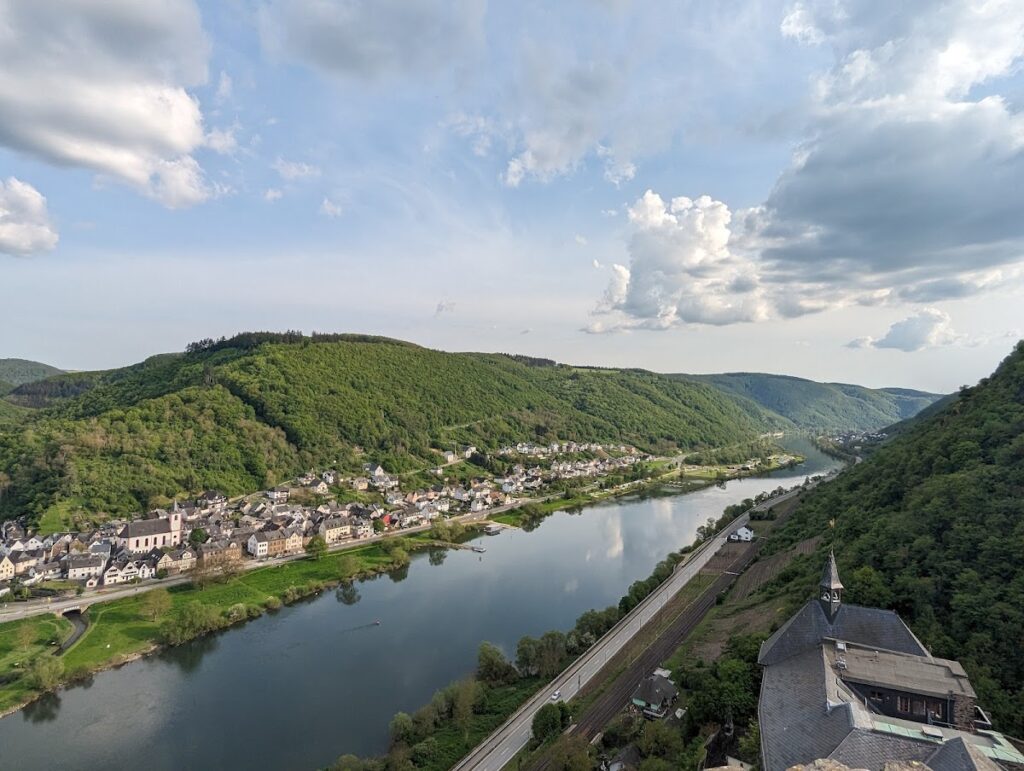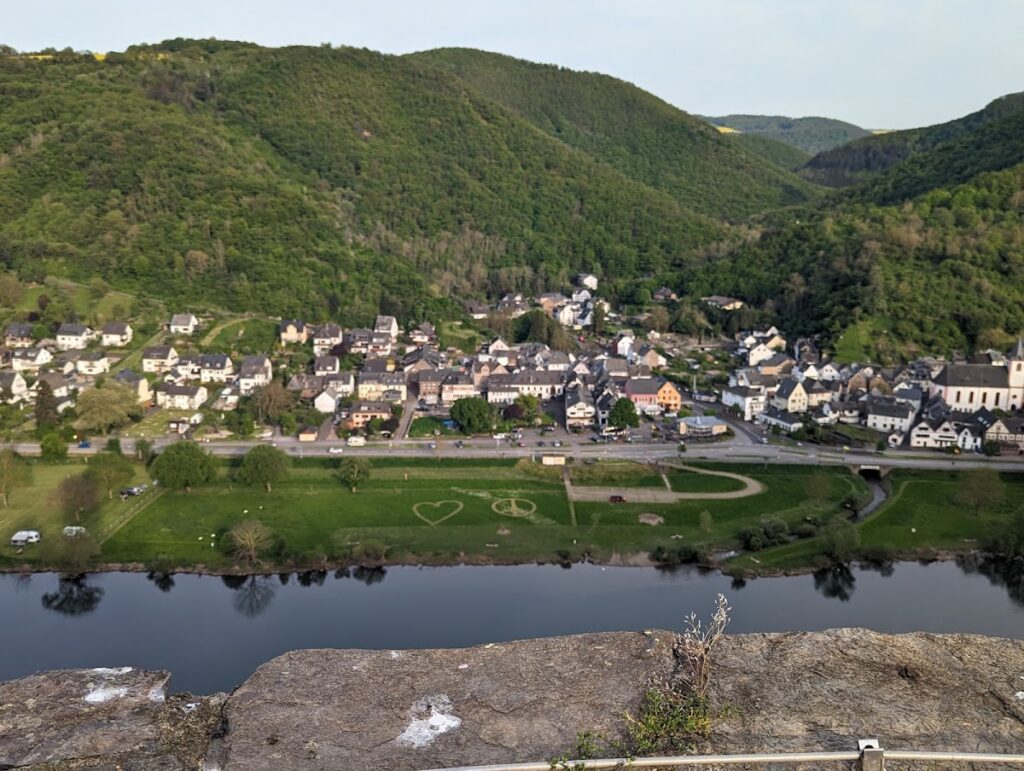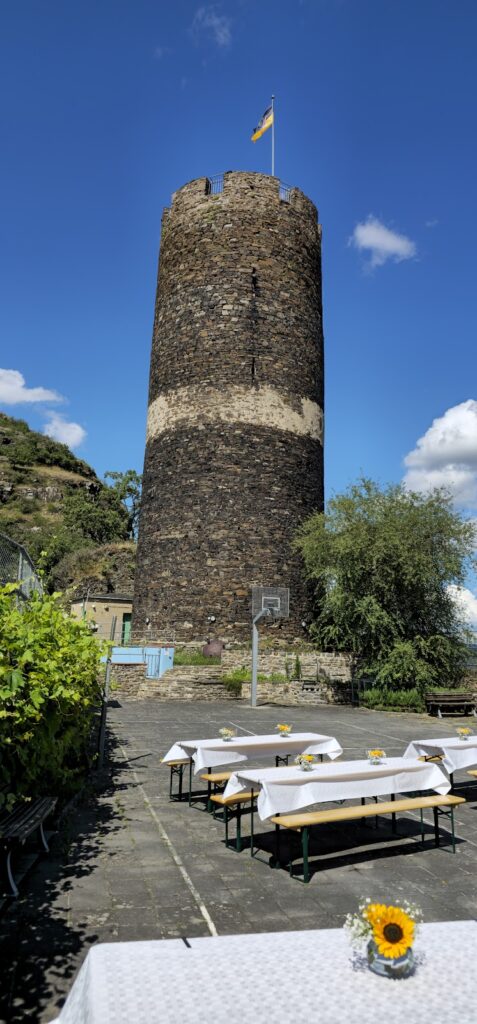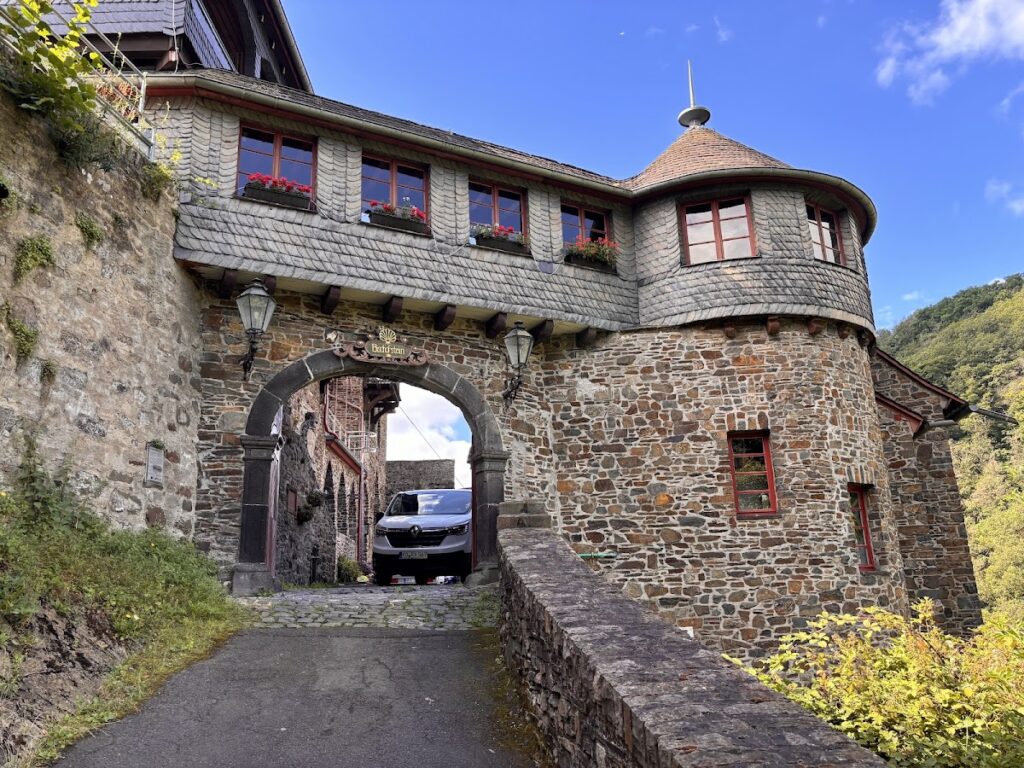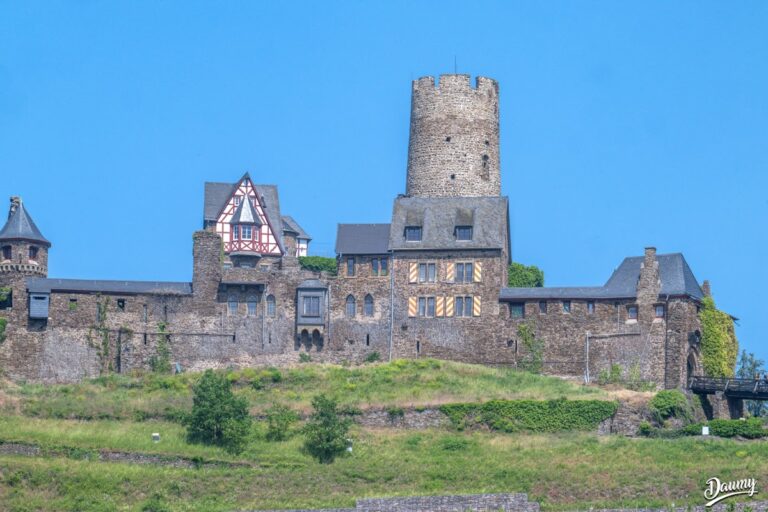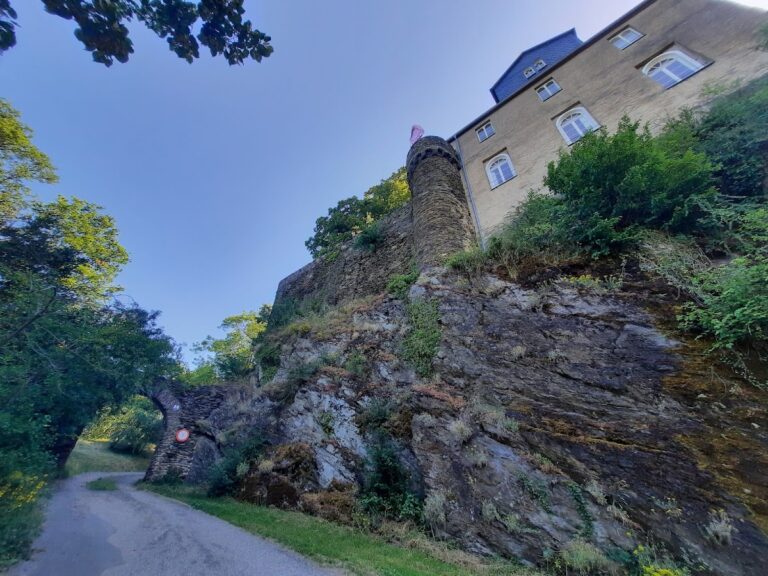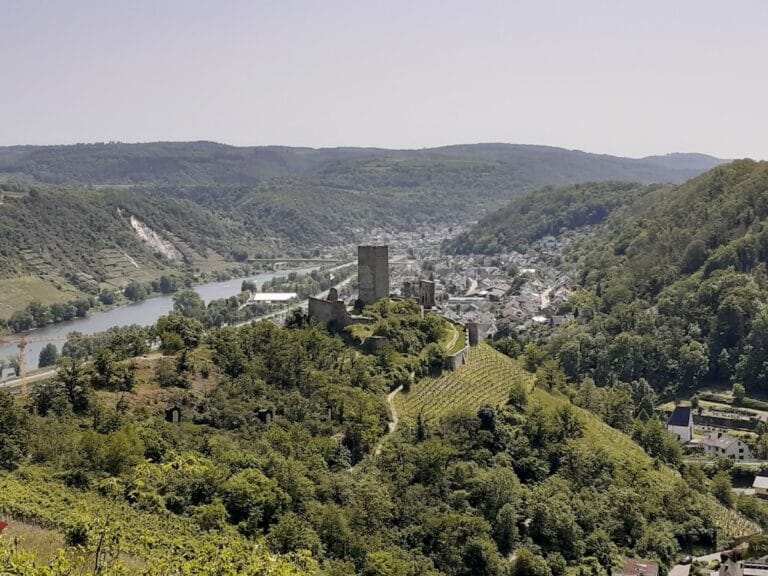Bischofstein Castle: A Historic Fortress in Münstermaifeld, Germany
Visitor Information
Google Rating: 4.5
Popularity: Low
Google Maps: View on Google Maps
Official Website: burgbischofstein.org
Country: Germany
Civilization: Unclassified
Remains: Military
History
Bischofstein Castle stands above the Moselle River in the municipality of Münstermaifeld, Germany. It was constructed during the High Middle Ages by the ecclesiastical authorities of the Archbishopric of Trier, reflecting the power structures of that period.
Construction of the castle began sometime between 1242 and 1259 under Archbishop Arnold II of Trier. By 1273, the half-finished fortress was completed at the personal expense of Archdeacon Heinrich von Bolanden, who later gifted the newly finished castle to the Trier Cathedral chapter. In doing so, Heinrich secured lifelong residence and feudal rights for himself and his heirs, establishing the castle as an official seat within the archdiocese’s holdings.
Following this, successive archdeacons maintained possession of Bischofstein, bound by obligations to support the Archbishop of Trier. These duties included denying shelter to his adversaries and safeguarding the crossings over the Moselle, underlining Bischofstein’s role within the region’s ecclesiastical territorial system.
The castle notably endured the widespread destruction of the Thirty Years’ War in the 17th century without suffering damage, as detailed in a 1680 visitation record of its chapel. However, this period of preservation ended in 1689 when French forces, engaged in the War of the Grand Alliance under Louis XIV, deliberately destroyed Bischofstein.
After France annexed the left bank of the Rhine in 1794, the ruined castle belonged to the St. Castor monastery in Karden. In 1803, amid secularization reforms, the property was sold to a local winemaker. By 1824, a residential building stood within the castle’s ruins, housing seven inhabitants.
The ruins remained until 1880 when the Bienen family acquired them. Significant rebuilding occurred in the 1930s after businessman Erich Deku purchased the site and transformed it into a holiday home. This work reused remaining medieval walls but created a new structure rather than restoring the castle’s original medieval form. To improve access, a road was carved into the rocky terrain.
Following Deku’s bankruptcy, the Neuerburg family obtained the property in 1937 or 1938 and completed the reconstruction. During the Second World War, the castle served humanitarian functions as a convalescent home, hospital, and shelter for refugees.
In 1954, the Fichte Gymnasium in Krefeld bought Bischofstein to use it as a school retreat center (Schullandheim), dedicating the castle primarily to educational and recreational programs for students and groups.
Although much of the medieval fortress was lost, the site is protected as a historic monument. It is recognized for its 20th-century architectural character rather than as an intact medieval stronghold. A major restoration in 2014 addressed an infestation of wood-boring beetles by heating the residential wing to high temperatures under sealed conditions, preserving the castle’s structural integrity.
Throughout its history, local stories have developed around features such as the castle’s notable white band on the tower, giving rise to legends linking this marking with floods, warnings to criminals, or symbolic episcopal rings, reflecting the site’s lasting cultural imprint.
Remains
Bischofstein Castle is perched approximately 150 meters above sea level on a rocky promontory that provides commanding views of the Moselle valley beneath. Originally built as a spur castle—a fortress situated on a projecting ridge—its position dominates the river and the adjacent Moselschieferstraße (B 416 road).
The most striking surviving element is the tall, cylindrical bergfried or keep. Rising about 25 meters, this massive tower features a distinctive white plaster band encircling it midway up. This band is a rare remnant of the original medieval plastering, which once covered such towers but has largely weathered away elsewhere. In 1997, the bergfried underwent careful renovation: battlements and the tower platform were rebuilt, and a new wooden staircase was installed inside based on medieval design, allowing safe visitor access.
Inside the castle grounds stands a chapel dedicated to Saint Stephen (St. Stephanus). This chapel, rebuilt in the 1930s and renovated in 1995, reflects medieval stylistic influences despite its modern reconstruction. Of particular note is a door preserved in the chapel that originated from the Baroque choir stalls of the Mainz Carthusian monastery, dating to 1723–1726. This intricately inlaid door was acquired in 1933 by Erich Deku and has remained a cherished historic feature through changes in ownership.
The castle’s current layout serves its function as an educational retreat. It contains four dormitories accommodating 38 beds, two rooms reserved for teachers, a common gathering space, and a combined dining and teaching room. The knights’ hall area has been repurposed into a recreation room equipped with leisure games such as table tennis and foosball. The complex also includes a kitchen and storage spaces.
Surrounding the castle are several hiking trails crossing the site. These include the Schoppenstecher-Wanderweg, local trail number 7 leading to Eltz Castle, the long-distance Moselsteig path, and part of the Mosel-Camino, connected to the Way of St. James pilgrimage route.
Views from the castle span the Moselle valley and the neighboring wine-growing villages, integrating the fortress into a broader landscape rich with cultural heritage. Nearby, on the hillside halfway down toward the river, stands the Paulus Chapel, constructed around 1200, which complements the historic environment.
The 1930s reconstruction reused existing medieval walls but did not attempt to replicate the original medieval layout or appearance faithfully. Instead, the resulting castle exhibits characteristics of 20th-century historicist architecture, combining preserved fragments with new elements consistent with that period’s restoration approach.
